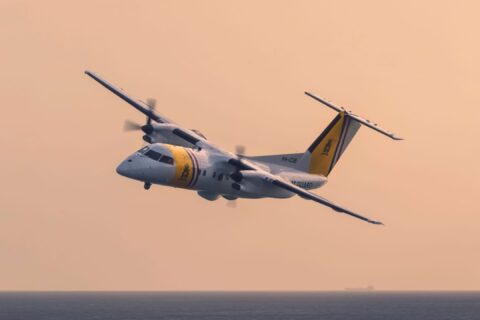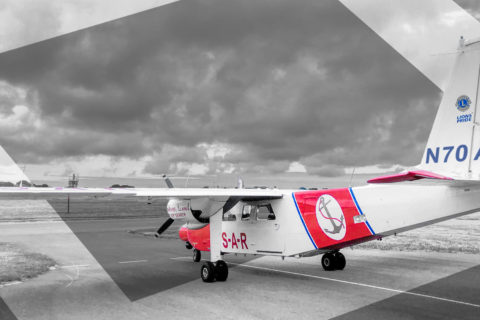“Our focus is innovation balanced with responsibility. Not everything that’s new on the market is good. We find out what is truly helping with the mission and determine the level of innovation that we need to bring.”
Wolfgang Grumeth
Airborne Technologies founder & CEO
27-year law enforcement veteran
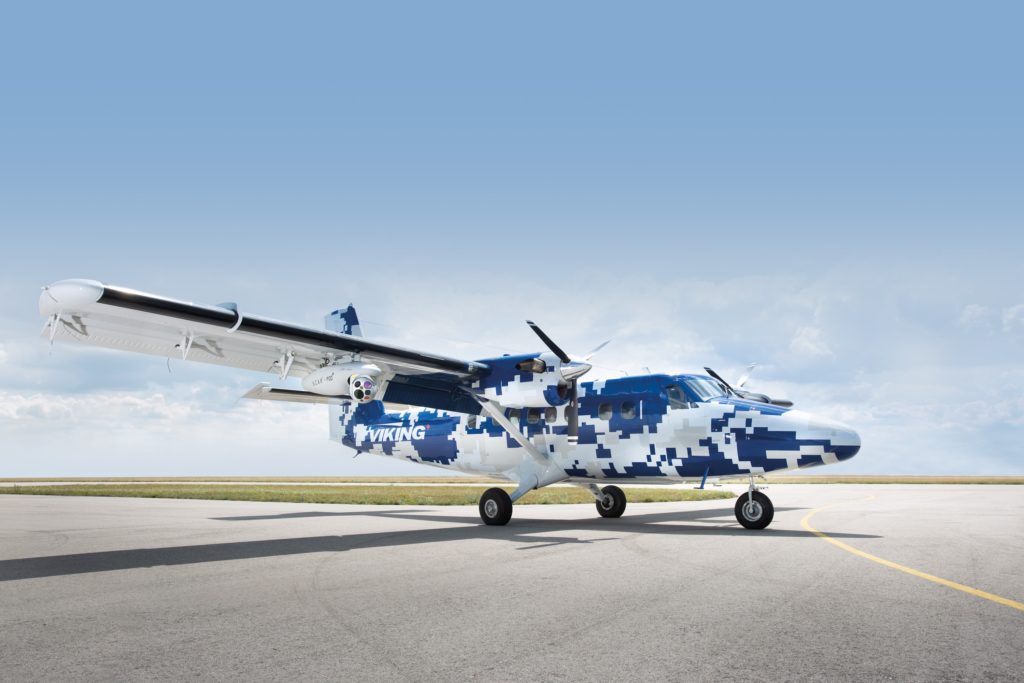
The big picture: build the best custom aircraft for law enforcement
A recent analysis predicts that the special mission aircraft market will be worth $18.3B by 2025, which represents a compound annual growth rate (CAGR) of 6.2%. While military applications are the driving force behind this trend, there’s a rising sophistication involved with intelligence, surveillance, and reconnaissance (ISR) missions in general. Extreme weather events from climate change have a substantial role to play, for instance. Special mission aircraft are also needed for environmental cleanups, crime management, terrorism response, supply chain stabilization, agricultural stability, and pandemic oversight — to name a few applications.
It is within this global context that Austrian entrepreneur Wolfgang Grumeth founded Airborne Technologies in 2008 at the Wiener Neustadt airfield, in collaboration with a group of experts on aircraft design, aviation engineering, flight operation, IT and geosciences. The team’s focus is to provide state of the art, high quality, and customized solutions for the practical needs of the surveillance community. ABT is an EASA approved Design, Production and Maintenance Organisation modifying aircraft to become special mission ISR planes.
ABT is trusted by hundreds of customers in 44 countries on all continents for building special mission aircraft.
“In the last 15 years, airborne surveillance has experienced an accelerated pace of technical advancement,” says Grumeth who is a 27-year law enforcement veteran. “The birth of augmented reality(A/R) technology was a defining moment. Ground-level operators now had the means to see exactly what the crew on board the aircraft was seeing. Now, with A/R.”
With a deep understanding of the right technologies to use, Grumeth and his team create some of the highest performing solutions on the market today.
“Our focus is innovation balanced with responsibility,” says Grumeth. “Not everything that’s new on the market is good. We find out what is truly helping with the mission and determine the level of innovation that we need to bring.”
Download Case Study + Exclusive Q&A
Download the PDF version plus exclusive Q&A on the state of C4ISR with ABT Founder and CEO, Wolfgang Grumeth.

The core objective: optimize strategic, situational thinking
In special missions contexts, Aircraft Operators need to make quick and accurate decisions. Tasks tend to be concurrent and include (without being limited to) managing the aircraft, adjusting cameras, communicating mission details, and navigating charts/equipment.
“Someone who is sitting in an aircraft — looking out a window — needs to know their position in the world and what’s on the ground,” says Grumeth. “There’s also a need to operate the camera system and monitor a digital map. The airborne crew also needs to communicate with the ground crew to report findings, while keeping an eye on what’s happening outside of the window.”
ABT uses CarteNav’s AIMS-ISR mission system software to equip the aircraft with multi-sensor control capabilities, geo-referenced moving maps, evidence reporting, SIGINT, custom mapping, and more mission optimization solutions. These capabilities reduce the potential for human error.
“AIMS-ISR enables Airborne Technologies to provide all information on a simple display,” says Grumeth. “The airborne crew can see a local operating picture that includes where the platform is, where the camera is looking in terms of an area, and where the camera is pointing on the ground. AIMS-ISR is a very powerful tool that provides us with multiple sensor applications — for instance, electro-optical and IR gimbals together with radar and subsidiary systems like automatic identification systems and radar. It makes multi-sensor information visible on one screen, superimposed over the landscape or seascape.”
“The best AR system is useless if you don’t have the map information. CarteNav is able to provide accurate maps of sometimes exotic countries. One of our customers has also worked with Airborne Technologies and CarteNav to create customized maps.”
Wolfgang Grumeth
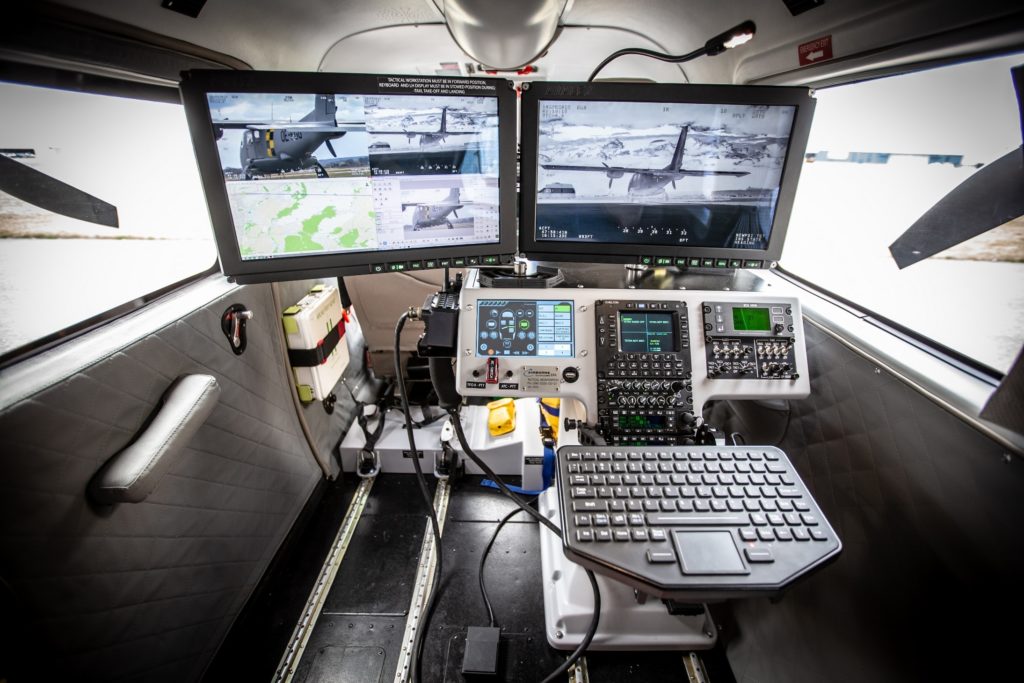
Efficient mission management: communicate clearly with ground teams
One application where ABT excels is in facilitating communication between airborne and ground crews.
“Rather than being limited to collecting pictures and communicating down, those who are airborne can stay connected on a real-time basis like being part of a video conference,” says Grumeth. “All parties get new and diverting information, together. Ground crews can uplink new tasks that are already implemented within CarteNav. This application is particularly valuable for helicopter applications due to limited average endurance times of two and a half hours.”
Mission management units are available for ground crews with limited aviation experience.
“A mission management unit is the core element that connects disparate features together on a user friendly menu on a touchscreen,” explains Grumeth. “The operator who is usually a police officer or soldier can navigate the touch screen with ease, to access a downlink, pictures, and augmented reality maps. This capability provides an integrated view into a mission.”
Unparalleled customer support: gain unique problem-solving insight
ABT works closely with CarteNav to guarantee successful AIMS-ISR implementations in even the toughest contexts.
“CarteNav has the best product support. It is the best in all matters from product support to training and troubleshooting.”
Wolfgang Grumeth
ABT and CarteNav have such a strong working relationship that they were able to customize aircraft remotely during the COVID-19 pandemic.
“The software does not require in-person installation,” says Grumeth. “Our team is also familiar with the implementation process. In other areas of our business, working remotely is difficult — especially because in half or more of our project cases, we need to visit the customer site to conduct a survey and/or measure the aircraft.”
“CarteNav has specialists and law enforcement veterans on their teams who understand specific mission applications,” says Grumeth. “There’s a high degree of integrity with every installation.”
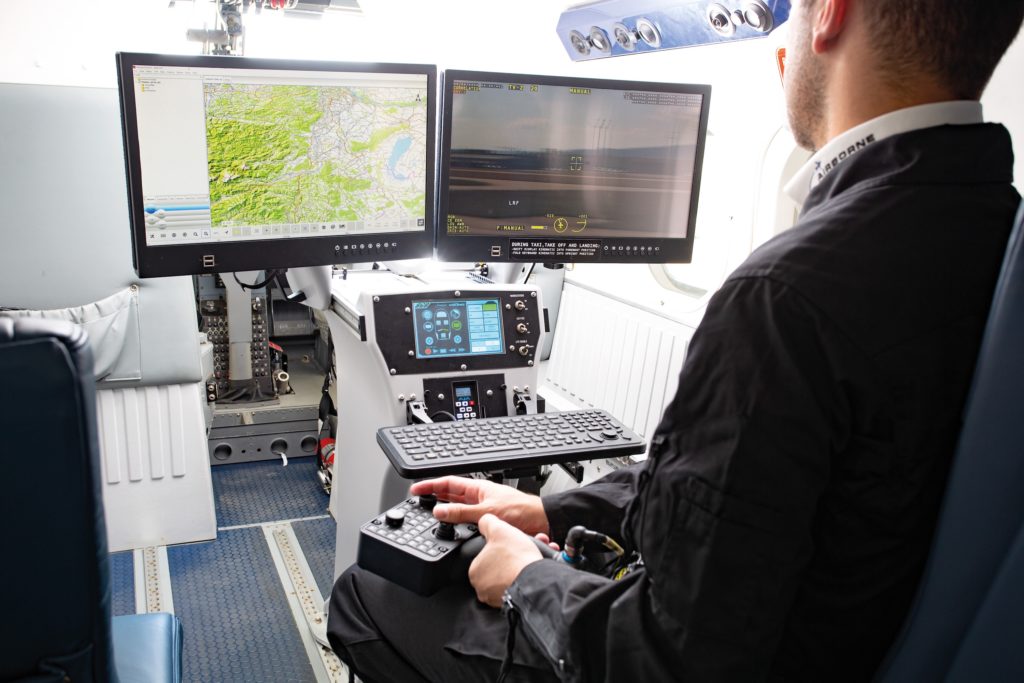
Results with significance: build a better end product
In a world that is becoming more complex, particularly with respect to ISR missions, ABT is committed to building the highest integrity and efficient solutions available for advanced applications.
Grumeth and his team are working on their next innovation, which is the development of a high performing mission computer.
Due to its highly successful track record, ABT is also making a name for itself in the unmanned sector with projects related to drone modifications. The right software is crucial for the level of sophistication of these projects.
“CarteNav represents Airborne Technologies well when we collaborate on a client project,” says Grumeth.
Download Case Study + Exclusive Q&A
Download the PDF version plus exclusive Q&A on the state of C4ISR with ABT Founder and CEO, Wolfgang Grumeth.

